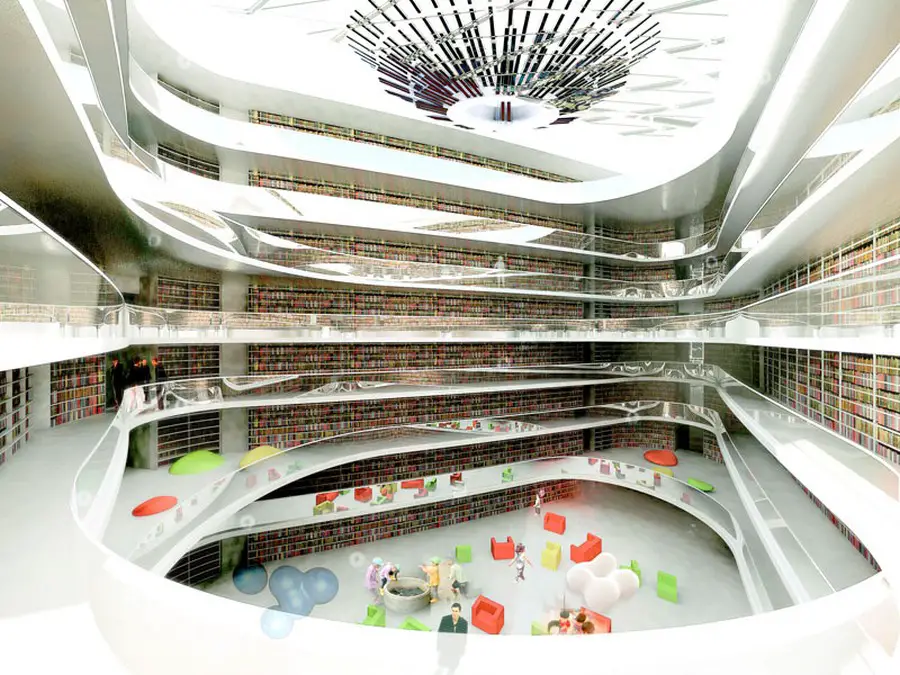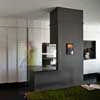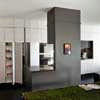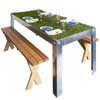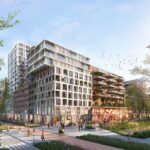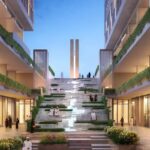Haiko Cornelissen, Amsterdam Architects, Design Studio Holland, Building Projects, NYC Office
Haiko Cornelissen Architecten
Contemporary Amsterdam + New York Architect Practice, Netherlands + USA Design Firm
post updated 18 Apr 2021
Haiko Cornelissen Architecten – Latest Design
30 Nov 2012
Daegu Architecture Competition, Republic of Korea
Design: Haiko Cornelissen Architecten / Paul- Eric Schirr-Bonnans Architecte
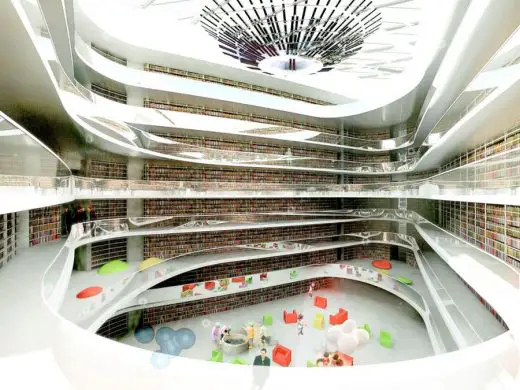
image by architects
Daegu Architecture Competition
Design proposal of the Daegu Gosan Central Library in Korea – wrapped around a central book void that is the programmatic, orientational & structural core of the building. “Given the centrality of books to the history of information transfer, the proposal is designed around a central book void”.
17 Apr 2012
Haiko Cornelissen Architecten News
The latest project by Haiko Cornelissen Architecten is part of the new Guggenheim
Stillspotting NYC project in Jackson Heights, Queens
WALL-ALL APARTMENT IN GUGGENHEIM STILLSPOTTING PROJECT
NEW YORK, April 17, 2012 – On the weekends from April 14 to May 6, the WALL-ALL apartment project by Haiko Cornelissen Architecten will be included in the new edition of Stillspotting NYC in Jackson Heights, Queens, a project by the Guggenheim Museum.
The WALL-ALL apartment by Haiko Cornelissen Architecten is a renovation project that expands the most important spaces by compressing the lesser used spaces into the apartment walls. Thanks to this unique concept that creates a quiet oasis within the dense urban environment, the apartment has been selected as a Stillspot for the Guggenheim project.
The two-year multidisciplinary Stillspotting NYC project by Assistant Curator David van der Leer explores stillness in the five boroughs of New York City. For the third edition in the Stillspotting NYC series, the Guggenheim Museum has commissioned architecture firm SO–IL to develop a living study of stillness in the vibrant immigrant neighborhood of Jackson Heights, Queens. The resulting project, Transhistoria, tells transformative personal narratives in a series of spaces selected by So-Il, including the WALL-ALL apartment.
In the WALL-ALL apartment, the Transhistoria story is told in the living room. After the renovation by Haiko Cornelissen Architecten, the most intensively used space in the apartment is more than doubled. Office, library and kitchen functions are compressed in the walls to make space for the living room.
The variety of functions creates a rich diversity of compression methods. Sliding doors conceal the office space while an upside-down door guards the media center in the library wall. Kitchen cabinets are stepped back to cover the kitchen functions (including the refrigerator), creating gaps that avoid door handles. In the bathroom a polished aluminum wall is created that conceals storage space and shower controls which runs straight into the exterior window. As a consequence the polished wall expands the room by reflecting the exterior window while forming a shower curtain in the open position.
With the WALL-ALL renovation, Haiko Cornelissen Architecten has designed a new way to bring old apartments in tune with contemporary lifestyles. The increased spaciousness and efficiency creates a unique answer to the flexible needs of today that even allows for public storytelling sessions such as Stillspotting NYC to happen in the living room.
29 Feb 2012
Recent Haiko Cornelissen Architecten News
Haiko Cornelissen Architecten presents Fasten Your City Belt
FASTEN YOUR CITY BELT EXHIBITED IN NAi
The urban transformation strategy Fasten Your City Belt by Haiko Cornelissen Architecten will be exhibited and published by the Netherlands Architectural Institute – NAi
NEW YORK, February 29, 2012 – On March 8th the urban transformation strategy Fasten Your City Belt, designed by Haiko Cornelissen Architecten, will be exhibited and published as part of the Dutch Europan 11 exhibition by the Netherlands Architecture Institute, NAi in Rotterdam, the Netherlands.
As an example of how lifeless office districts can be transformed into lively neighborhoods, Haiko Cornelissen Architecten has designed the urban transformation strategy Fasten Your City Belt. The current economic recession shines a spotlight on a troublesome urban post-war phenomenon; the mono-functional office district.
Cities around the world are plagued with mono-functional ideas but the recent economic recession shows that the office district is especially troublesome. Typically, office districts become lifeless only after office hours.
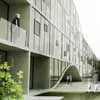
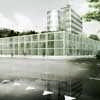
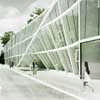
pictures : ©WeMake3D – rendering
However, with global office vacancy rates at the highest level in two decades, mono-functional office areas have become permanent dead zones. Vacant offices surrounded by vacant parking lots have no other programs to hide these flaws, and become no-go zones in cities around the world. Fasten Your City Belt transforms no-go office districts into lively and diversified neighborhoods.
To show how the transforming strategy works, Haiko Cornelissen Architecten has chosen the Amstel III office district in Amsterdam for the Europan 11 competition – one of the most prestigious and renowned competitions for young European architects.
Based on research, the most important factor for creating lively cities is the density of people, buildings and program. Because Amsterdam has a steady demand of residences for the niche market, apartment buildings with accompanying program (supermarkets, daycare, restaurant, etc) have been introduced.
Secondly the existing spatial organization needs to be transformed to accommodate the increased density. Thanks to the oversized infrastructure, the perimeter of each plot can be used to introduce new program in belts around the plot.
These belts are transformed in response to local conditions: pushed up to create an entrance, pushed down or in to create more space and light for the existing buildings, or twisted to create space for the parking entrance below. Parking spaces are moved underground to make room for semi-private gardens, and office lobbies are moved up to solve the office vacancy by allowing new program to move in on the ground level.
Finally it is essential that plot owners are given incentives to collaborate in a private-public effort to transform the area. Reducing the oversized infrastructure allows the local government to increase the plot size of the owner in exchange for redeveloping the plot. The resulting increase of building area and spatial quality increases the value of the plot and therefore the incentives even further.
Fasten Your City Belt is a strategy that transforms lifeless office districts into lively urban areas through a combination of strategic interventions and incentives. With Amsterdam as an example, Fasten Your City Belt serves as a new paradigm for any city that wants to transform mono-functional areas into lively neighborhoods.
14 Dec 2011
picNYC table
picNYC TABLE TRANSFORMS DINING INTO URBAN PICNIC
Haiko Cornelissen Architecten presents the picNYC table with grass table top that brings the rural picnic into the urban residence
NEW YORK, December 13, 2011 – Haiko Cornelissen Architecten today unveiled the picNYC table with life grass table top, photographed by Iwan Baan.
Urban farming is a fast growing phenomenon where the typically rural practice of agriculture is brought into the city. The picNYC table goes one step further and brings the rural experience of picnicking not just in the city, but into the residence.
picNYC table in use:
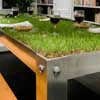
photograph : Iwan Baan
The folded lightweight aluminum table top and legs form a stiff framework for the grass, soil and stones (needed for drainage). The picNYC table creates a surreal experience of nature in the city that literally transforms dining. Suddenly spilling water becomes a necessity instead of a problem and wine glasses need coasters not to prevent ring stains but to avoid tumbling.
picNYC table in use:
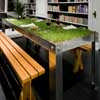
photograph : Iwan Baan
Included in the rural experience is the maintenance of the grass. No table grass mower yet exists and the grass therefore needs to be cut by hand.
Depending on the number of cuts, maintenance, usage, sunlight and season, the PicNYC table responds with a variety of colors to the conditions set by the owner. However, the color can always be reset to bright green since fresh sod is available year round.
Based on the concept of transposing natural experiences to the residence, endless alterations are possible with flowers, herbs or even vegetables. Depending on the needs and green thumbs of the owner, the PicNYC table brings various degrees and qualities of the rural experience into the urban residence. As a consequence, the PicNYC table transforms dining into a feast at a new intersection of nature and city.
More design projects by Haiko Cornelissen Architecten online soon
Location: Amsterdam, Holland & New York City, NY, USA
Architects Practice Information
Architect studio based in Amsterdam, Holland + New York City, USA
Haiko Cornelissen Architecten
Haiko Cornelissen is a Dutch architect with an office in Amsterdam and New York. After working for OMA and Steven Holl, Haiko opened his own office in 2011 to work on design, architectural and urban projects around the world. Regardless of its scale, each design aims to enable contemporary society in new ways by creating innovations that expand human possibilities.
Current projects vary from an apartment in New York to a masterplan in Helsinki, from a tower in Tokyo to an urban project in Amsterdam or from a villa in Panama to a masterplan in Almere, the Netherlands. Thanks to his extensive international network of talented architects and consultants built up after years of working for internationally renowned firms, Haiko is able to run a new type of office that is not confined to a fixed location and a set number of people.
Haiko Cornelissen Architecten is a networked office where the best architects and consultants around the world collaborate based on their merits, regardless of their location. The networked office allows to activate expertise when necessary and to generate the best possible design team for each project.
Born in Amsterdam, Haiko studied at MIT and Harvard before graduating in 2004 from the Technical University of Delft. From 2003 – 2010, Haiko has worked for Artefactory in Paris, OMA in Rotterdam and Steven Holl Architects in New York and Beijing. He has taught at the Columbia University with Steven Holl. Haiko Cornelissen is also a visiting critic at TU Delft, Cooper Union and Pratt Institute and has lectured at the Brooklyn Experimental Media Center.
Dutch Architecture
Borneo Houses
Design: various architects incl. MVRDV
New York Architectural Designs
New York City Architecture Designs – Manhattan architectural selection below:
Brooklyn Bridge Competition Design
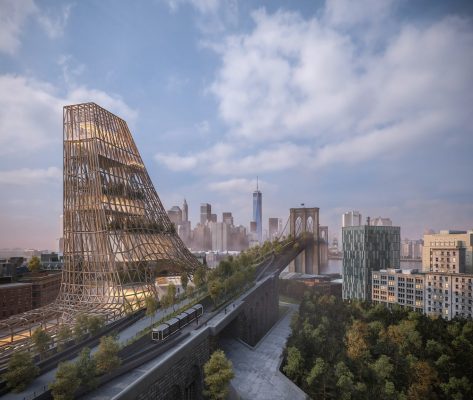
image courtesy of architects
Brooklyn Bridge Design by DXA studio
SAR Academy, Modern Orthodox Jewish Day School, Jesselson Campus, 655 West 254th Street Riverdale, NY 10471, USA
Design: architects Esther Sperber and Hila Stern
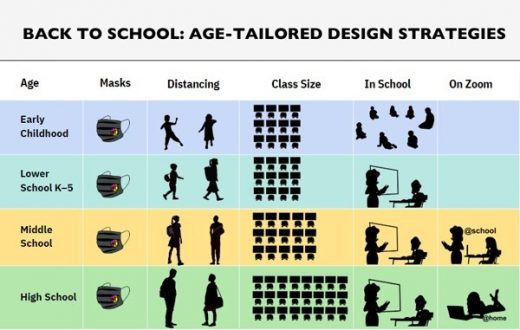
image courtesy of architecture studio
SAR Academy, Orthodox Jewish Day School
Comments / photos for the Haiko Cornelissen Architects page welcome
Website: www.haikocornelissen.com

